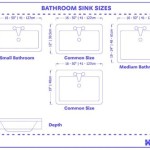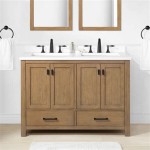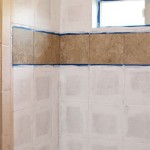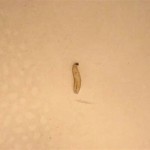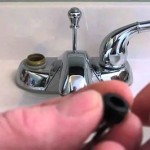How To Effectively Clean Bathroom Mould
Bathroom mold is a common household problem, thriving in the warm, humid environment that bathrooms naturally provide. This article outlines a comprehensive approach to identifying, removing, and preventing mold growth in bathrooms, focusing on practical methods and preventative measures.
Mold, a type of fungus, reproduces through spores that are always present in the air. These spores become problematic when they land on surfaces with sufficient moisture and organic food sources, such as soap scum, dust, and skin cells. The bathroom provides all these conditions, making it a prime breeding ground for mold. Ignoring mold growth can lead to aesthetic issues, structural damage, and potential health problems for occupants.
The first step in tackling bathroom mold is accurate identification. Mold can appear in various colors, including black, green, brown, and white. It often presents as a fuzzy or slimy growth on surfaces. Common locations for mold growth in bathrooms include areas with high moisture levels, such as tile grout, shower walls, ceilings, around sinks, and behind toilets. Black mold (Stachybotrys chartarum) is often feared, but any mold growth should be addressed promptly and effectively, regardless of color.
Identifying and Assessing the Mold Problem
Before initiating any cleaning process, it is crucial to assess the extent of the mold infestation. Small areas of mold, typically less than 10 square feet, can generally be handled by homeowners using appropriate cleaning methods. Larger infestations, however, may require the intervention of a professional mold remediation service. These professionals have the expertise and equipment to safely and effectively remove extensive mold growth and address underlying moisture problems that contribute to the issue.
During the assessment, it is important to identify the source of the moisture problem that is fueling the mold growth. Leaky faucets, dripping showerheads, inadequate ventilation, and condensation on cold surfaces are all common culprits. Addressing these underlying issues is essential for preventing future mold growth, even after a thorough cleaning. Ignoring the source of the moisture will only lead to a recurring mold problem.
Safety should be the primary consideration when dealing with mold. Mold spores can trigger allergic reactions, asthma symptoms, and other respiratory problems in sensitive individuals. Before starting the cleaning process, it is essential to wear appropriate personal protective equipment (PPE). This includes gloves (preferably rubber or nitrile), a face mask (N95 respirator), and eye protection (goggles). Proper ventilation is also crucial to minimize exposure to mold spores and cleaning chemicals. Open windows and doors, and consider using a fan to circulate air during and after the cleaning process.
Effective Mold Removal Techniques
Several effective cleaning solutions can be used to remove mold from bathroom surfaces. The choice of cleaning solution will depend on the type of surface being cleaned and the severity of the mold growth.
Bleach Solution: A solution of bleach and water (1 part bleach to 10 parts water) is a common and effective mold killer for non-porous surfaces like tiles, glass, and plastic. Apply the solution to the affected area, let it sit for 10-15 minutes to allow the bleach to penetrate and kill the mold, and then scrub the surface thoroughly with a brush or sponge. Rinse the area with clean water and dry it completely. Note that bleach can discolor or damage certain materials, so it's essential to test it on an inconspicuous area first. Never mix bleach with ammonia or other cleaning products, as this can create dangerous fumes.
White Vinegar: White vinegar is a natural and less harsh alternative to bleach. It's effective for killing mold and is safe to use on most surfaces. Spray undiluted white vinegar onto the moldy area, let it sit for an hour, and then scrub the surface clean. Rinse with water and dry thoroughly. The acidic nature of vinegar helps to break down mold and prevent its recurrence.
Baking Soda Paste: Baking soda is a mild abrasive cleaner that can help remove mold stains and absorb moisture. Make a paste of baking soda and water, apply it to the moldy area, let it sit for a few minutes, and then scrub the surface clean. Rinse with water and dry thoroughly. Baking soda is also a natural deodorizer, which can help eliminate any musty odors associated with mold growth.
Hydrogen Peroxide: Hydrogen peroxide is another effective mold killer that is safe for use on most surfaces. Spray a 3% solution of hydrogen peroxide onto the moldy area, let it sit for 10-15 minutes, and then scrub the surface clean. Rinse with water and dry thoroughly. Hydrogen peroxide has bleaching properties, so test it on an inconspicuous area first.
Tea Tree Oil: Tea tree oil is a natural fungicide and antibacterial agent. Mix 1 teaspoon of tea tree oil with 1 cup of water in a spray bottle. Spray the solution onto the moldy area, let it sit for an hour, and then wipe the surface clean. No rinsing is required. Tea tree oil has a strong odor, but it dissipates quickly. This solution is particularly useful for preventing mold from returning.
For porous materials like drywall or wood, mold can penetrate deeper into the material, making it difficult to remove completely. In these cases, it may be necessary to cut out and replace the affected section of drywall or sand down the moldy wood and apply a mold-resistant primer and paint. Consultation with a professional is recommended for extensive mold growth on porous materials.
After cleaning, it is vital to dry the area thoroughly. Use a clean towel to wipe down the surfaces, and consider using a dehumidifier to further reduce moisture levels in the bathroom. Proper drying is essential to prevent mold from returning.
Implement Preventative Measures to Inhibit Further Growth
Preventing mold growth is key to maintaining a healthy and mold-free bathroom. Several preventative measures can be implemented to reduce moisture levels and inhibit mold growth.
Improve Ventilation: Adequate ventilation is crucial for removing moisture from the bathroom. Ensure that the bathroom exhaust fan is working properly and use it during and after showers and baths. If the bathroom doesn't have an exhaust fan, consider installing one. Opening a window after showering can also help to ventilate the space.
Control Humidity: High humidity levels create a favorable environment for mold growth. Use a dehumidifier to reduce humidity in the bathroom, especially in humid climates. Aim to keep humidity levels below 50%. Regularly check for leaks and address them promptly to prevent moisture buildup.
Clean Regularly: Regular cleaning helps to remove soap scum, dust, and other organic matter that mold feeds on. Clean bathroom surfaces, including tiles, grout, sinks, and shower walls, at least once a week. Use a mold-resistant bathroom cleaner to help inhibit mold growth. Pay particular attention to areas prone to moisture buildup.
Fix Leaks Promptly: Leaks are a major source of moisture that can lead to mold growth. Regularly check for leaks around faucets, showerheads, toilets, and pipes. Repair any leaks immediately to prevent water damage and mold growth.
Properly Seal Grout and Caulk: Grout and caulk are porous materials that can absorb moisture and provide a breeding ground for mold. Regularly inspect grout and caulk for cracks or damage and repair them promptly. Applying a sealant to grout and caulk can help to prevent water penetration and mold growth. Reapply sealant every year or two, as needed.
Use Mold-Resistant Products: When renovating or remodeling the bathroom, consider using mold-resistant products, such as mold-resistant drywall, paint, and grout. These products contain additives that inhibit mold growth, providing an extra layer of protection.
Wipe Down Surfaces: After showering or bathing, wipe down wet surfaces, such as shower walls and doors, with a squeegee or towel. This helps to remove excess water and prevent moisture buildup.
Allow Adequate Airflow: Avoid placing items, such as bathmats or shower curtains, directly against walls or floors, as this can trap moisture and promote mold growth. Allow adequate airflow around these items to help them dry properly.
Consider a Shower Curtain Liner: Shower curtain liners, especially those made of fabric, can be prone to mold growth. Consider replacing the liner regularly or using a mold-resistant shower curtain liner. Wash the liner periodically in the washing machine with bleach to kill any mold spores.
By implementing these preventative measures, homeowners can significantly reduce the risk of mold growth in their bathrooms and maintain a clean, healthy, and mold-free environment.

How To Clean Mold In Shower Grout Tips And Tricks Certified Care

How To Clean Bathroom Mould Sanctuary Bathrooms

How To Clean Black Moldy Shower Or Kitchen Tile And Silicone Caulking Two Methods No Scrubbing

How To Clean A Mouldy Shower Like Pro

Remove Mould From Bathroom Tiles With 1 Natural Item Not Vinegar Or Bicarb News Express Co

How To Clean A Moldy Shower Super Satisfying With Me

Get Rid Of Mould From Your Home With Our Hints And Tips Domestos

How To Clean Mold In Tile Grout Jdog Carpet Cleaning Floor Care

How To Prevent Mould On The Bathroom Ceiling Dbs Bathrooms

Cleaning Mrs Hinch Fans Share Tips To Remove Ceiling Mould Express Co
Related Posts
